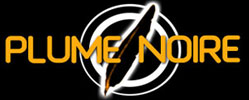
|
The Man on the Train review
:. Director: Patrice Leconte
:. Starring: Jean Rochefort, Johnny Hallyday
:. Running Time: 1:35
:. Year: 2002
:. Country: France
|
In Patrice Leconte's The Man on the Train, a heavy handed and sometimes lazy work about the unlikely meeting of two very opposite men, French rock icon Johnny Halliday and Jean Rochefort breathe life into their characters and the movie as soon as they share the screen.
As echoed in the title, the film's premise is built around a recurrent theme of westerns: the arrival of a stranger in a quiet town and its consequences. The Man on the Train has been set as a psychological contemporary western in the French countryside. Halliday plays Milan, a taciturn and tired gangster who hides a couple of guns and a violent past, but would like to settle down. Rochefort plays Manesquier, a retired teacher who has never the house where he was born and dreams of adventure. Their encounter will allow them to exchange lives for a rare moment of happiness. During these 3 days, Milan will learn how to wear slippers, smoke a pipe and talk about poetry while Manesquier will learn gangster tricks and how to shoot a gun. The score, mainly played by an acoustic country guitar, is here to remind us that despite being in the most boring French countryside town, we are indeed watching a western and that things will eventually unwrap in some kind of climax.
The film only vibrates when the two characters are together. While the spectator will certainly enjoy the contrast between the two characters and their way to exchange lives, it's the actors and what they represent that is the main piece here. While Rochefort is sparkling, just as often the real revelation is Halliday who perfectly underplays his role with sensibility and humor. The singer, better known for cheesy Elvis-like films—except for Godard's Detective, shows he can finally transfer his stage presence to the screen. An amusing aspect here is that the movie plays with his image as much as with his character: when Milan puts on the slippers, which is shocking, we also can't help imagining Halliday, the wild rock singer, putting on these slippers, which is even more shocking.
Unfortunately, the lack of subtlety in the script and the direction undermine the meeting of these two personalities. From the very beginning, Leconte (The Window of St. Pierre, Girl On The Bridge) overexposes the characters' traits and destiny with heavy imagery, as he feared his audience wouldn't be bright enough to get it. To show us that Manesquier has a boring life he is introduced looking at old pictures and doing puzzles. His dreams of adventures are concretized in the most ridiculous manner. Not only he is playing cowboy "I am Wyatt Earp" in front of a mirror (which also awkwardly underlines the already obvious western references) but he tells Milan "I'd like to be you" what is almost an insult to our intelligence. But the most excruciating moment of imagery is undoubtedly the final scene, which literally puts in images this exchange of lives. It's not only clumsy and cheesy, but useless. Since the center of the film was the few days Milan and Manesquier spent together, which is what really matters, there was no need to show us what happens next and Leconte should have ended his film when their roads go apart with a poetic question mark. The script also looks lazy in terms of dialogues and jokes (in French) as the scene with the slippers (pantoufles) only seems to be here to show Milan becomes a stay-at-home guy (pantouflard). Another character (Jean-Francois Stevenin) is fortunately here to not let us miss such a smart allegory by telling Milan "tu deviens pantouflard" (you've become a stay-at-home guy).
Rochefort & Halliday certainly deserved better than this film in which imagery, in the end, is sharper than expected: Leconte's direction has indeed become pantouflarde.
Fred Thom

 Reviews of French Movies: 2012 - present Reviews of French Movies: 2012 - present
 French Films: 1998 - 2011 Reviews French Films: 1998 - 2011 Reviews
 French Music Reviews French Music Reviews
|
|


